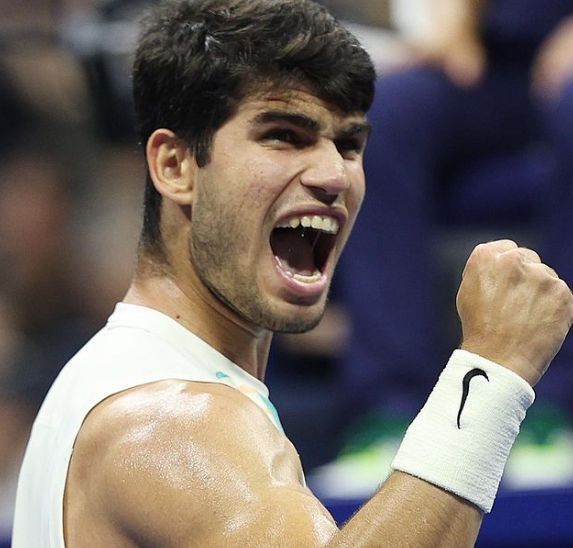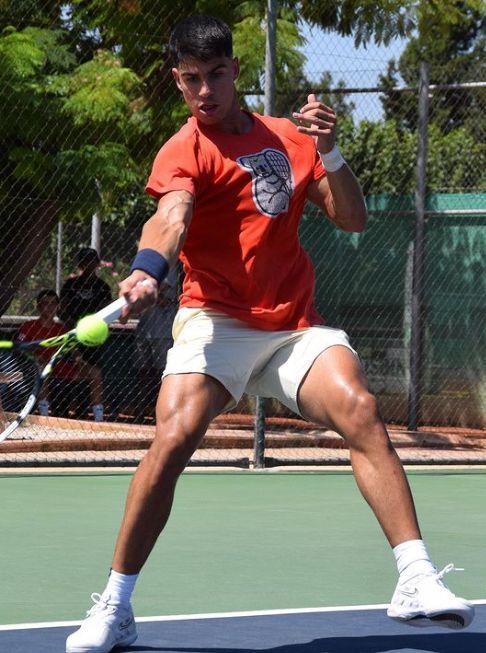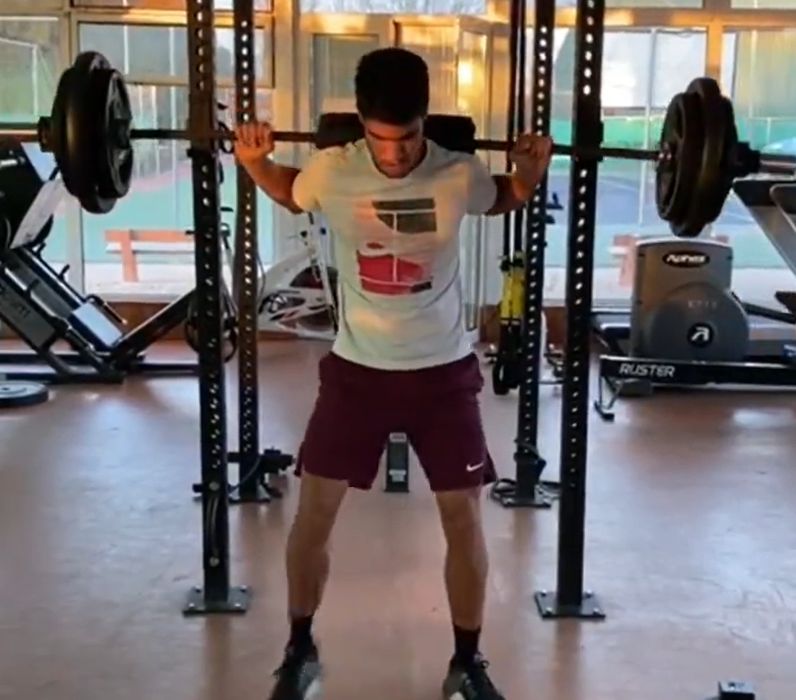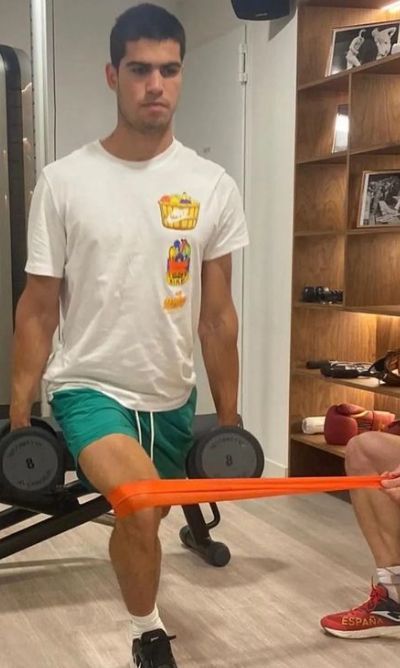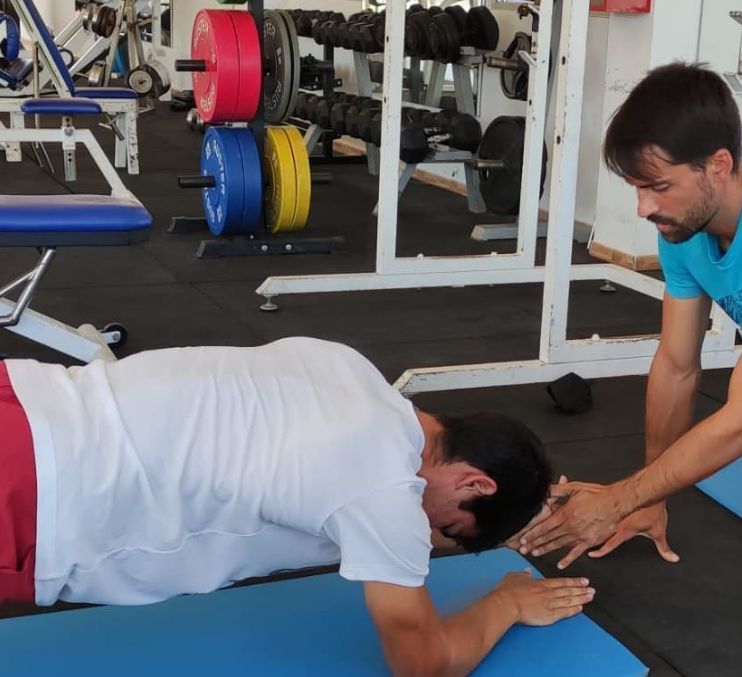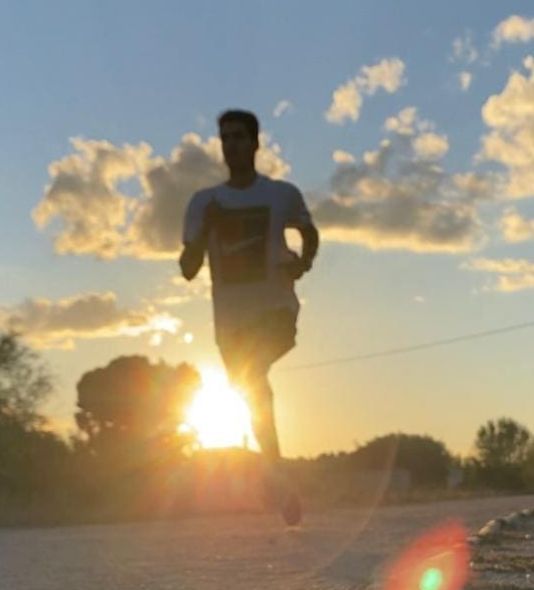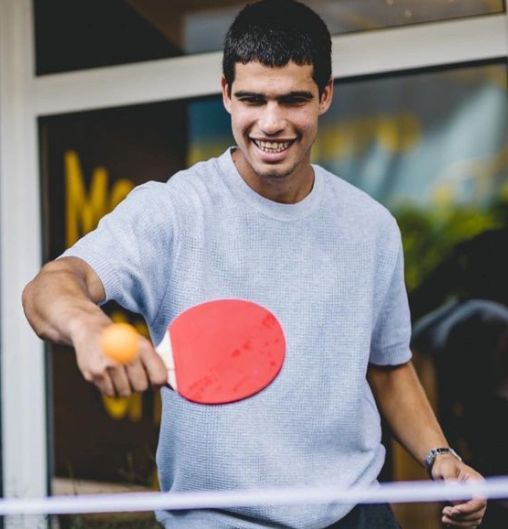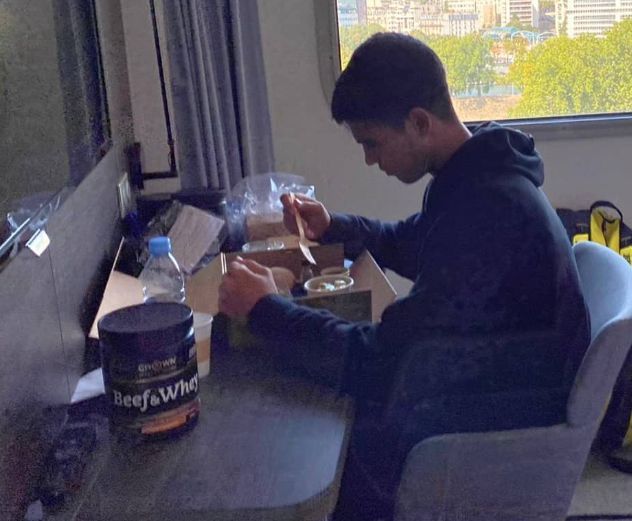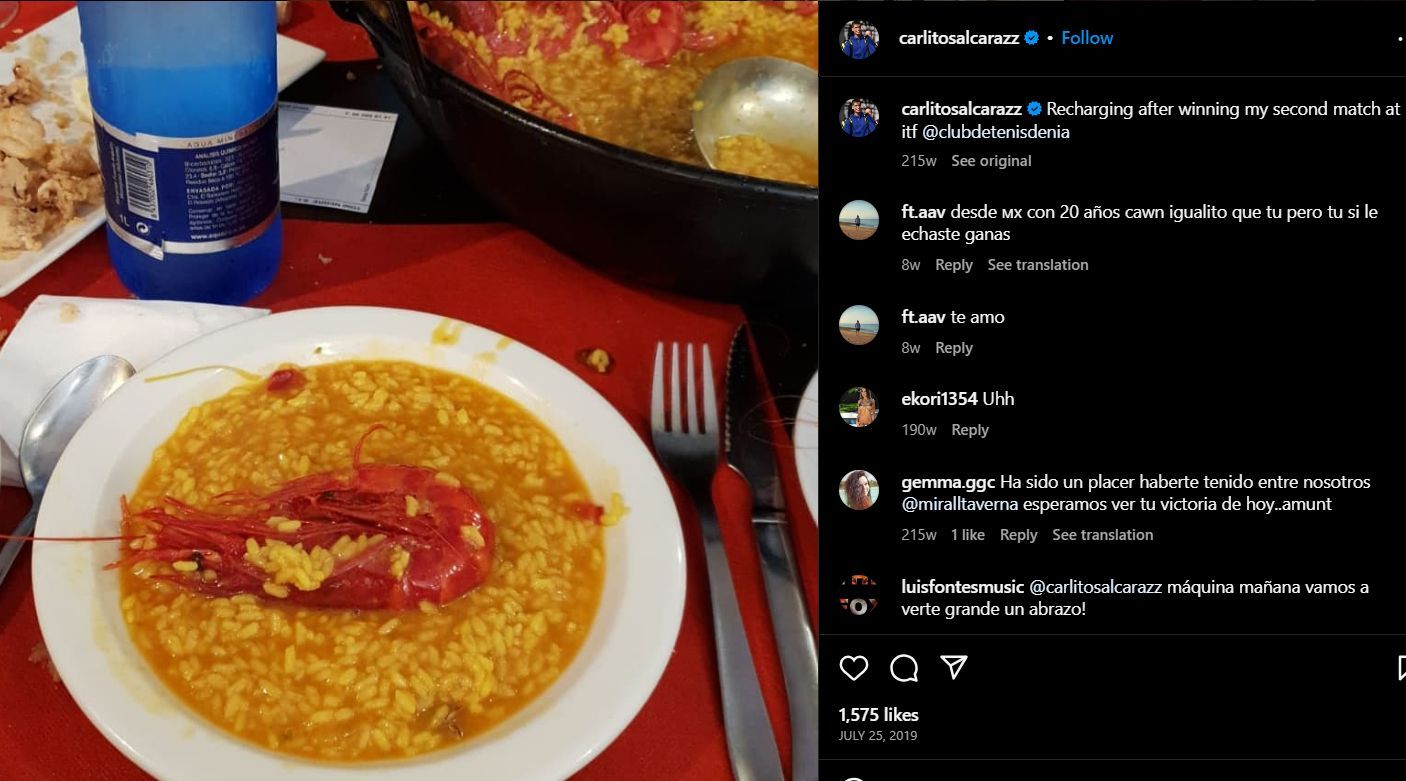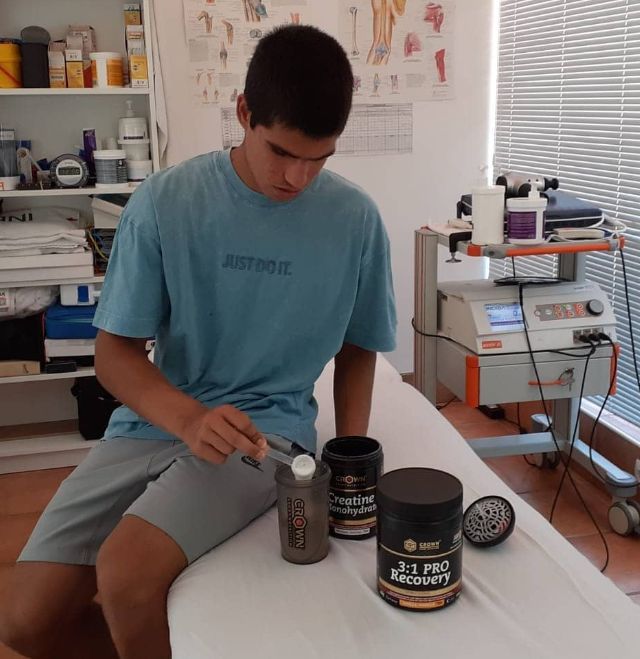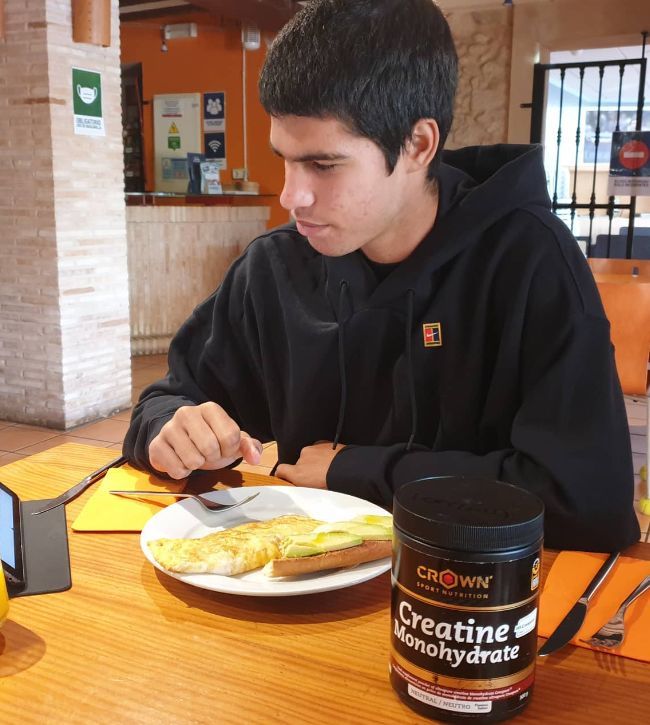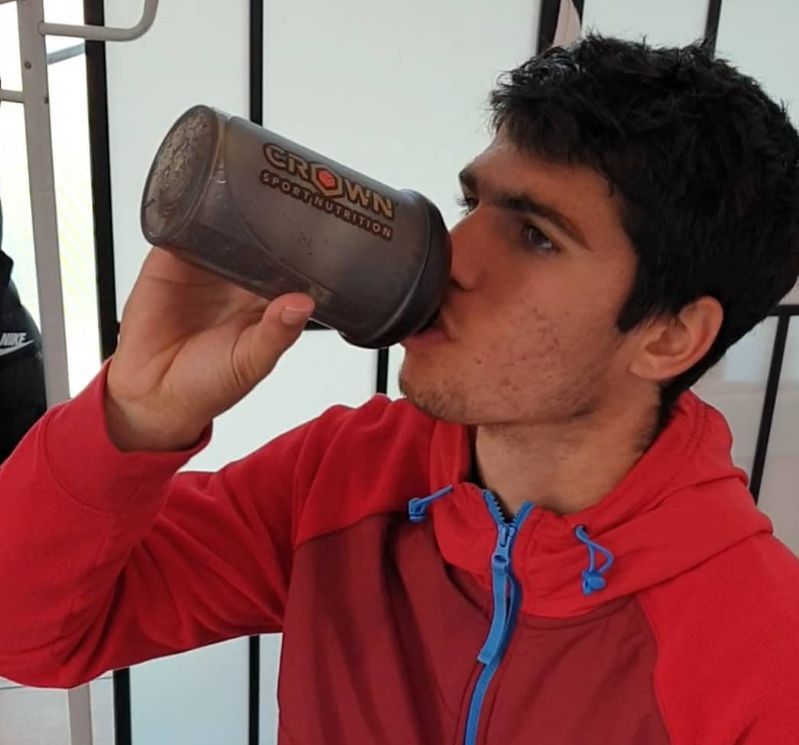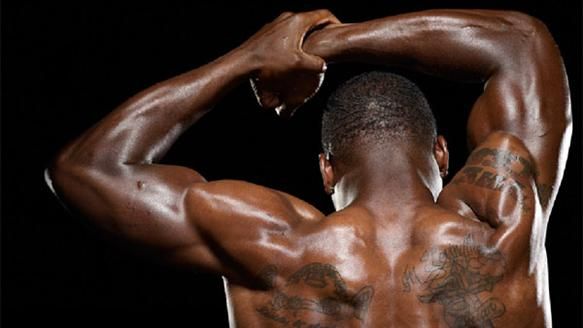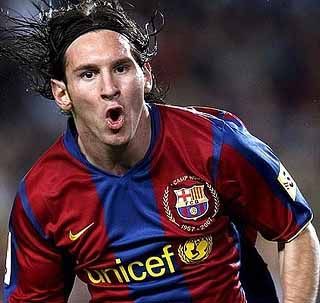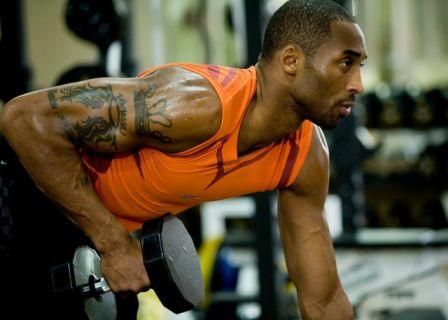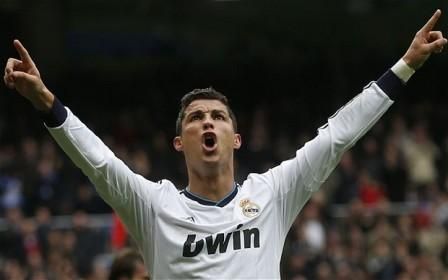Carlos Alcaraz Garfia is a Spanish professional tennis player. He has been ranked as high as world No. 1 in men’s singles by the Association of Tennis Professionals. In this article, we will discuss what the tennis player does to maintain his physique, thus exploring the kind of workouts and diet plan that he follows on a daily basis.
Carlos Alcaraz’ Body Statistics
- Birth Year: 2003
- Birth Date: 5 May
- Height: 1.85 m / 6 ft 1 inches
- Weight: 81 Kg / 188 lbs
- Chest: 40 inches
- Waist: 32 inches
- Biceps: 13 inches
Carlos Alcaraz’ Workout Routine
Before beginning any workouts, he likes to practice some stretches. For him, stretching is mandatory as it helps prevent any injuries. Although Carlos does not share his exact workout routine to prepare for his games, his workouts are a combination of strength, agility, and mobility that helps him on the playing court as well. Here’s a sample workout of Carlos Alcaraz:
Warm-Up (10 minutes)
- Aerobic Warm-Up (5 minutes): Light jog or skipping.
- Dynamic Stretching (5 minutes): Leg swings, arm circles, high knees, butt kicks, and walking lunges.
Agility and Speed Training (15 minutes)
- Ladder/Box Drills (8 minutes): Ickey shuffle, in-and-outs, side-to-side hops.
View this post on Instagram
- 2. Cone Drills (7 minutes): Zig-zag runs, T-drills, figure 8s.
Strength and Power Training (25 minutes)
- Single-Leg Romanian Deadlifts (3 sets of 10 reps per leg): Holding dumbbells, for hamstring and glute strength.
- Plyometric Push-Ups (3 sets of 10 reps): For chest and tricep power.
- Medicine Ball Rotational Throws (3 sets of 12 reps on each side): For core strength and power.
- TRX Rows or Pull-Ups (3 sets of 10 reps): For upper back and grip strength.
- Bicep curls
View this post on Instagram
Core Training (10 minutes)
- Russian Twists (3 sets of 20 reps): Holding a medicine ball.
- Side Plank (3 sets, hold for 30 seconds on each side)
- V-Ups (3 sets of 15 reps): For abdominal strength.
Tennis-Specific Drills (20 minutes)
- Groundstroke Drills (10 minutes): Practice both forehand and backhand shots from the baseline.
- Volley and Net Play (5 minutes): Quick reaction drills at the net.
- Serve and Return Drills (5 minutes): Emphasize service accuracy and power, as well as return positioning.
View this post on Instagram
Cool Down and Flexibility (10 minutes)
- Static Stretching (8 minutes): Focus on major muscle groups, especially the ones heavily used in tennis: quads, hamstrings, calves, shoulders, chest, and back.
- Foam Rolling (2 minutes): For any tight spots, especially the IT band, quads, and calves.
Cardio:
- Hiking
- Cycling (stationary bike)
View this post on Instagram
- Swimming
- Other sports
Besides this, he also practices his moves on the court and likes to play table tennis to improve his skills.
Carlos Alcaraz’ Diet Plan
Carlos has a variety of food items because he travels a lot. He likes to keep things interesting and adds a variety of food to his meals especially when he is traveling. His breakfast remains constant – some fruit, eggs, toast, and coffee. He also adds dates and fish to his diet in the form of sushi or grilled fish, etc. The tennis star commented,
I have a plate of mixed gluten-free pasta. That is, pasta with and without gluten, with a cocoa cream called Ambrosía that has olive oil and dates in it. I normally eat all that, more or less, one and a half hours before a match.
When it’s match time, I normally have a bar with dates, egg whites and, I think, guarana in it. And I normally have bananas, too. I’ve been eating that for a long time, like a year and a half, and I really do like it.
Here is a sample diet plan of what a tennis star like Carlos Alcaraz might have in his diet to perform his maximum on the court.
Breakfast:
- Whole grain pancakes or waffles with maple syrup
- Scrambled eggs with spinach, tomatoes, and feta cheese
- A smoothie made with Greek yogurt, mixed berries, a banana, chia seeds, whey protein, and almond milk
- A cup of green tea or black coffee
Mid-morning Snack:
- A handful of mixed nuts (almonds, walnuts, cashews)
- A piece of fruit like an apple or orange
Lunch:
- Grilled chicken breast or tofu salad with mixed greens, cherry tomatoes, cucumbers, olives, quinoa, and an olive oil dressing
- Whole grain roll or bread with a bit of butter or olive tapenade
- Iced tea or water with lemon
Afternoon Snack (Pre-training):
- A protein bar or an energy bar suitable for athletes
- A sports drink or water to stay hydrated
Post-training Snack:
- A protein shake with whey or plant-based protein
- A banana or a handful of dried fruits
Dinner:
- Baked salmon or lentil patties
- Steamed broccoli and carrots with a drizzle of olive oil and a sprinkle of sea salt
- Quinoa or brown rice
- A mixed bean salad with kidney beans, chickpeas, corn, diced red pepper, cilantro, and a light vinaigrette
- Herbal tea or water
Evening Snack (if needed):
- A bowl of cottage cheese or Greek yogurt with honey and a sprinkle of granola
- A chamomile tea or warm milk for relaxation
Carlos also takes some supplements like electrolytes to keep his energy up during his matches and practice sessions. He also includes whey protein in his diet to up his protein intake.
Carlos Alcaraz’ Diet Tips
- Hydration: Tennis players, especially during intense training and matches, lose a lot of fluids. It’s vital to stay hydrated. While water is crucial, sports drinks can be beneficial during extended play for electrolyte replacement.
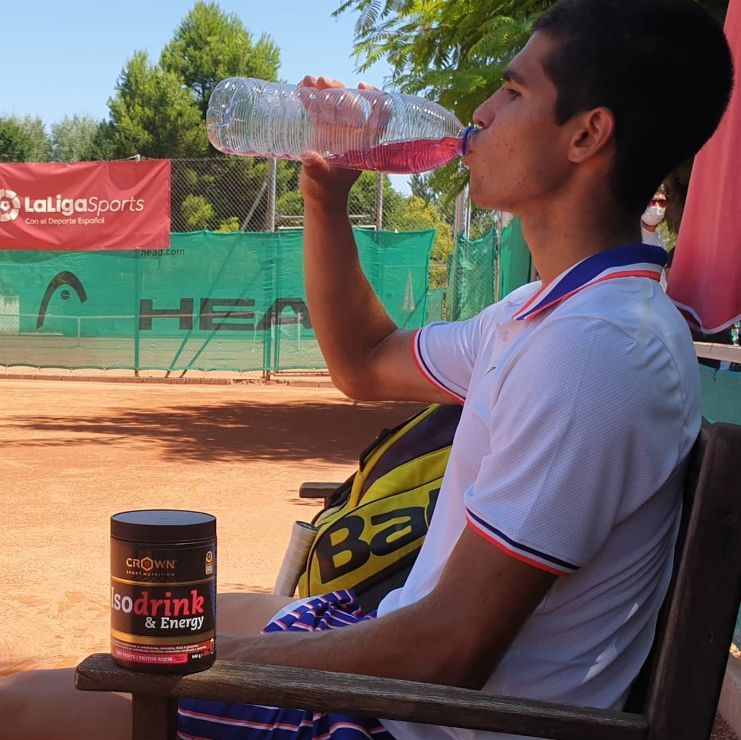
- Carbohydrates: Tennis is an endurance sport, so players need a good source of carbohydrates to fuel their muscles.
- Healthy Fats: Sources like avocado, nuts, seeds, and olive oil can help with inflammation and provide sustained energy.
- Micronutrients: Ensure a varied diet to get all necessary vitamins and minerals. Sometimes, based on the recommendation of a health professional or nutritionist, a player might take specific supplements.
- Tailoring: This is a general diet. Players should consult with a sports nutritionist to tailor dietary choices to individual needs, taking into account personal health conditions, allergies, and preferences.
- Rest and Recovery: Nutrition is just one part of the equation. Adequate rest and recovery are essential for optimal performance.

